Text
Pelargonium hirtum has lovely purplish magnolia to pink flowers which attracts butterflies and bees, the leaves are finely divided and hairy with many leaflets which resembles a carrot leaf and is slightly aromatic. It is a semi succulent shrub with fleshy upright stems which grows to about 30 cm in height with a bushy growth & the delicate flower stalks contain 3-8 flowers. P hirtum grows well in pots and as ground cover, in rock gardens or/and on sandy soils in full sun to part shade in acid neutral type soil. This plant is native to the Eastern Cape where it grows among stone ledges, slopes and sandy areas. Pelargonium hirtum also known as the fine leaved pelargonium has been grown in the gardens of Europe since the late 1700s. The name hirtum is derived from the Latin word “ hirtus” meaning shaggy, hairy or with thick growth, this refers to the hairy leaves of this plant.
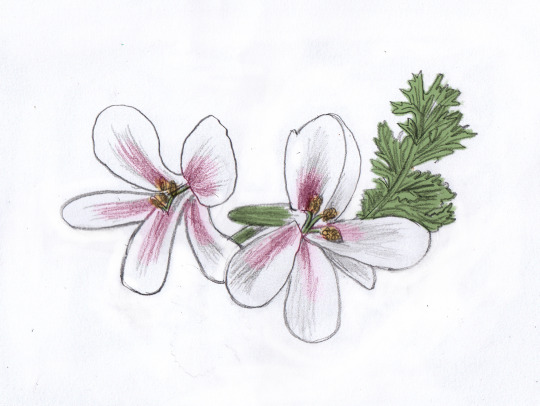
0 notes
Text
Creating a wildlife garden

A wildlife garden can bring beauty and tranquillity to your surrounds with butterflies, birds, bees, and other wildlife.
Bringing wildlife to your garden has many benefits, we have a better connection with nature where we can learn to co-exist with the natural environment and encourage insects such as butterflies, dragonflies, bees, birds, reptiles and amphibians to your surroundings while creating a peaceful and relaxing retreat.
Making a wildlife garden supports the local flora and fauna while providing them with a nature inspired habitat such as a sanctuary for solitary bees, ladybirds, & beetles made out of bamboo canes, old logs, bricks, twigs and straw or a wildflower meadow, a rock garden, a pond, bog garden or a water feature to encourage frogs, birds and dragonflies.
Flowers & nectar rich plants not only look attractive in the garden but can also appeal to insect pollinators such as bees, butterflies and moths which collect pollen and for birds which eat seeds and berries.
A bird house, bird table, hanging feeders or a bird bath can also help encourage birds to your surroundings especially if they are close to the house where you can view them from your window.
Trees, shrubs, hedging and wall climbers are also great for providing a hiding place or an nesting area for birds and also lizards.
Earthworms are great for aerating and improving the quality of the soil and can also provide food for various wildlife.
Leaving in weeds such as dandelions, daisies, thistles, poppies, bell flowers, doves-foot, bind-weed and wild carrot not only encourages bees, butterflies and other insects but can look amazing in a wild flower meadow with long grasses in a small area of your garden or mixed with plants within a raised border, Ants are also good for gathering and dispersing seeds.
Adding a variety of different shaped flowers to your garden can encourage several types of insects.
Flower shapes include tubular, bell, funnel, saucer, rosette and funnel shapes which come in many colours and sizes.
Some bees, wasps, moths and butterflies have long tongues known as proboscis which feed on pollen and nectar and can reach far into the flower, Some flower types are also only pollinated by hummingbirds.
Other ideas to encourage wildlife include: creating a home for solitary bees, a wildlife garden, bog, water feature or a pond, attract more butterflies and a haven for birds.
Photo by Vincent Van Zalinge-unsplash.com
#wildlife garden#wildlife#gardening#gardens#flowers#nature#birds#butterflies#insects#bees#water feature#hobby#animals
0 notes
Text
Mixed borders

Mixed borders-advice for maintaining or planning your border
Mixed borders have gained popularity in the coming years, moving away from the more traditional herbaceous borders which were grown tightly together in large rectangular beds based on their colour and height with tiny flowers at the front, medium in the centre and taller 6 ft plants at the back.
Mixed borders are easier to keep and are usually mixed together with annuals, perennials, biennials, shrubs and low growing trees of similar heights but the density of the plants are chosen more carefully, more airy plants like delicate ornamental grasses and flowers on long stalks can look striking mixed with more dense plants in the flower bed and also with deciduous trees, flowering shrubs, rosebushes,lilies and hedges.
Airy plants include: Cimicifuga (feathery spikes of white flowers), Delphinium (long flower spikes of various colours), Eremurus( foxtail lily ), Echinops (globe thistle), Kniphofia (colourful flower spikes), Lobelia, Allium, Armeria, Aquilegia. Camassia, Fritillaria, bottle bush types such as pennisetum& pennisetum(fountain grass).
Dense shrubs include : Button bush, Butterfly bush, Rose of sharon, Azalea, lilac, Quince, Dentzia, Forsythia, Weigela, Cinquefoil, Shrub rose, Potentilla, Rhododendron, Viburnum, Lavender, Sage, Mallow, Phlox, Geraniums, Campanula, Hemerocallis(day lily) and tall upright pelargoniums such as P. Vitifolium & P. Denticulatum.
They can also be mixed with simplistic and architectural shaped foliage to make your border more interesting, brightly coloured or Zoned leaves can also look effective.
When planning or improving your border think about the colours, height, density, growth size and season of flowering thought the year.
The style of the border is also important so that that it blends well with the rest of the garden, such as a wild natural border, a border with similar colours such as gold-yellows, purple- blue, dark-pale pinks. A natural woodland garden with ferns, hollyhocks and bluebells, rock border with succulent type species or a border mixed with roses.
They can also be based on a certain theme as as modern, contemporary, traditional, romantic, sculptural,or based on a theme such as a rustic, Japanese, Zen, European, Mediterranean or Asian gardens.
The edging of the border can vary, the traditional brick & stone edging is the most popular because it last longer than other edging types and is usually cemented to keep them in place, although some types do tend to be more expensive and can also be part of a patio design, They can also be positioned in different ways, they can be laid diagonally, as stone edging such a flagstone and cobble stone, a natural stone wall, or you may prefer a border with hedges, wooden edging, logs or sleepers.
Wooden edging can look effective in the garden but doesn't usually last so long as it tends to rot, but this can depend on what style you wish to achieve. Or for a more simple approach you can use cinder blocks as edging which can be cemented and painted or small metal border fence edging ,wattle fencing if you like an more rustic look.
Mixing in an organic matter such as from a compost bin into the soil of the border can help improve its quality , this can be done once a year in Spring or Autumn which can also help with drainage in the soil. You may also think about lifting plants out gently, removing any dead leaves & stems and dividing plants to stop them growing too close together every four to five years.
Ideal plants for border perennials
Perennials are typically Spring and Summer flowering plants which die back in Autumn and Winter & then re growth occurs again in Spring, although this is not always the case. Some types still thrive throughout the Winter and can live for many years but this can also depend on temperature and location.
Perennial types include evergreen, deciduous, monocarpic, woody or herbaceous.
Evergreens are great for adding colour to the garden during the winter months such as the blue flowered Brunnera, Helleborus in various colours, Nepeta with blue grey aromatic foliage and the Stachys pink flowers on long stems.
Deciduous-When you read the word deciduous you immediately think of trees dropping their leaves in Autumn but in fact there are a few plants & shrubs which also shed their petals & fruit. Deciduous perennials include the bright yellow flowered Goldrod, the highly fragrant honeysuckle, white flowered viburnum, Grapes, wisteria & poison ivy.
Monocarpic are perennials which are short lived, they grow only to flower, produce seed and then die, these include the Acanthacease group of flowering plants, Apocynaceae, Asteraceae, Agavaceae, Araceae and Fabaceae.
Woody perennials have woody stems and roots that continue to grow after each season, these can be trees, shrubs or wood climbing plants know as lianas.
Woody perennials include rosemary, mulberry, blackberry, honeysuckle, and apple.
Herbaceous perennials have fresh green stems which are not woody and is usually a herb that is used in food or for medicinal properties, these include grasses, ferns, vines, trees, shrubs and some bamboo types.
Such as Peonies, Salvia, Poppies, Aquilegia(columbine), bananas, cone flower (echinacea), daffodils are examples of Herbaceous perennials.
Other perennials ideal for borders include: Acanthus Achillea-yarrow, Agapanthus-African lily, Anemone, Catananche-cupids dart, Cimicifuga-long flowering spikes,Eremurus-foxtail lily, Centaurea-cornflower, Chrysanthemum-daisy, Delphinium, Echinops-globe thistle, Evigeron, Lupin,Linum,Physostegia,
Photo by erda-estremera-unsplash.com
#gardening#hobby#perennials#gardens#flowers#flora#border#woody perennials#border perennials#mixed borders
4 notes
·
View notes
Text
Pelargonium peltatum in bloom

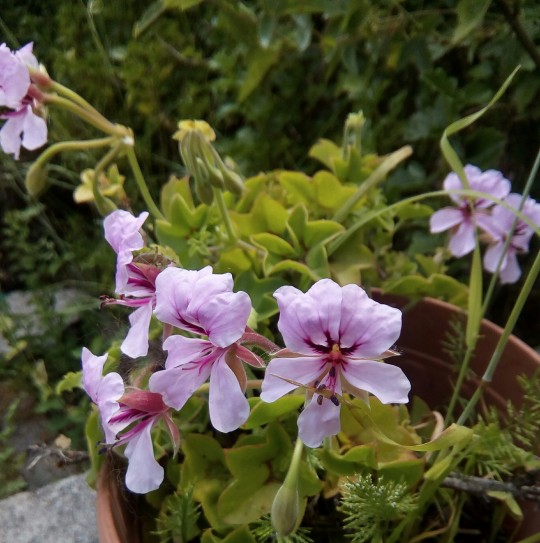
Two different colour flowers of pelargonium peltatum is now in bloom.
The flowers are of shades of white, pink or pale purple and each flowering stalk has 2-9 flowers.The leaves are rounded, fleshy with a slightly succulent appearance usually with a dark zone in the centre, the sap from the leaves can be taken for a sore throat & also the leaves when grinded into a paste can be applied to scratches, light burns and wounds as an antiseptic.
P. peltatum is s climbing or trailing plant that likes to trail through other shrubs or trees, ideal for hanging baskets, medium sized pots or planted in the garden next to trees or trellis. It is native to South Africa in the Eastern & Western Cape where it grows in succulent shrub land and coastal areas which has both Summer and Winter rainfall.
1 note
·
View note
Text
History of Gardens -Flower Borders

The first garden was believed to have been created in 10,000 BC in the middle east (The Levant) a Mediterranean region, the Fertile Crescent was a wide expense of land which was similar in shape to a first quarter phase of the moon, which contained wild grasses of barley and wheat so that hunter gathers would grow there own food instead of searching for miles to find it and could then live closer together in settlements.
Later when the advancement of human society began to develop gardens were more appreciated for their attractiveness and was regarded more as a luxury.
The Epic of Gilgamesh contains the earliest recorded gardens from the year 2100 BC when Uruk the ancient city of Sumer was built upon a large manmade hill, the upper hill contained buildings & temples and the lower areas of the hill was said to contain gardens with ponds, orchards, date palms and fallow fields, it also had water canal irrigation systems to water plants.
From the 16th century BC the ancient Egyptians created gardens for decorative use, garden cultivation & design seen from early wall paintings containing ponds with lotus plants surrounded by lines of acacia and palm trees.
Over the centuries new garden ideas & layouts where being created, manly for the use of herbs for medicine and vegetables for providing food.
The raised border was first created during the middle ages in Europe but was restricted to monasteries and the wealthy who owned manor houses. Local saplings were woven together to create fences and filled with soil to make raised beds, usually rectangular in shape, they were used in kitchen gardens, vegetable and herb gardens and infirmary gardens.
During the Elizabethan era in England cottage gardens became fashionable and were mainly for easy access to herbs, vegetables and fruit around the cottage grounds, but also contained a variety of flowers such as old roses, hollyhocks, Sweet William, primrose, violets and calendula.
Present day cottage gardens have a mixture of different plants in a border directly outside the cottage with stone or turf pathways, this style has a natural feel with well balanced colours and various flower shapes and fragrances, sometimes mixed with long grasses, these often replaced lawns with many flowers and herbs grown close to each other to reduce the need for weeding.
The potager is a formal garden design in France, consisting of a mixture of fruits, vegetables, flowers and herbs grown together in borders, edging beds such as wattle fencing, containers or divided by hedges, walls or pathways. It is usually grown organically and some of the flowers are editable ideal for a kitchen garden, Pelargoniums and geraniums also grow well in this type of garden style with plants such as chives, cauliflower, broccoli, gladiolus, hyssop,
peppers, marigolds, strawberries, violets, lettuce & mallows and many more.
Article from May2020 newsletter www.pelargoniumspeciesworld.com
Photo by Birmingham museums trust-unsplash.com
#history of gardens#ancient gardens#Elizabethan era#middle ages#Ancient Egypt#Cottage gardens#Sumer#gardening#plants#nature#flowers#flower border#hobby
0 notes
Photo


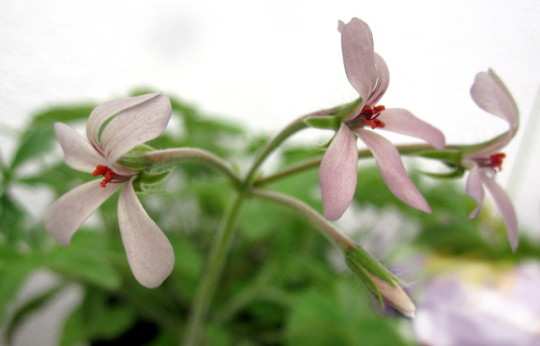
Newly opened flowers of pelargonium quinquelobatum
#flowers#pelargonium#species#nature#geranium#pelargonium quinquelobatum#gardening#garden#plants#outdoors
6 notes
·
View notes
Photo
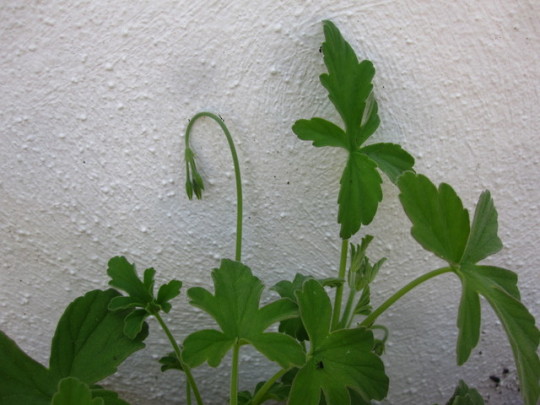

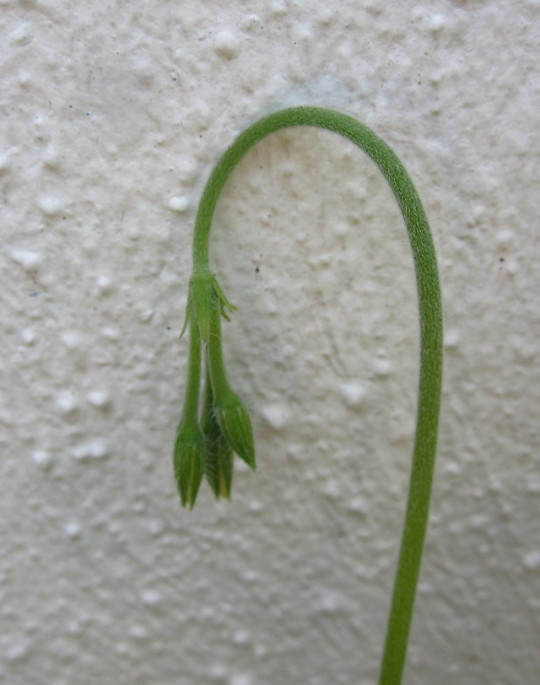
The young plant of Pelargonium quinquelobatum is now coming up to flower, it has greenish blue leaves and yellowish green flowers and is native to Tanzania, Kenya and Ethiopia. P. Tongaense is also about to flower which has red petals that attract butterflies.
0 notes
Photo



This plant which germinated in the Autumn could possibly be a cross between Pelargonium radens and Pelargonium graveolens. The leaves are like that of P. graveolens and the flowers look something between the two, light flowers like P. radens and the shape is similar to that of P. graveolens. They are pollinated by bees so occasionally something unusual comes up.
#geranium#pelargonium#pelargonium radens#pelargonium graveolens#nature#crete#plants#cross#natural hybrid#flowers
1 note
·
View note
Photo

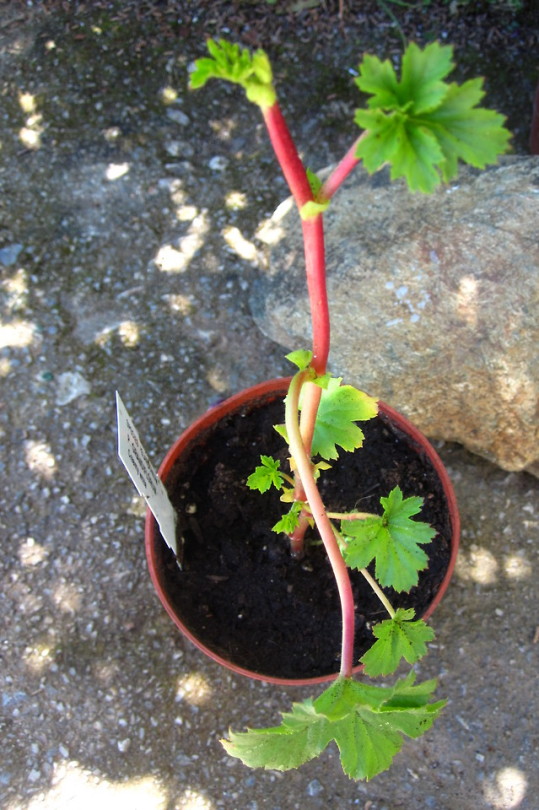
We now have new plants of P.grandiflorum and P. papilionaceum among others, they are still quite small but should grow well throughout the year, These plants both have large beautiful flowers and foliage, P. papilionaceum has flowers that resembles a butterfly with larger upper petals and darker markings & P. grandiflorum also has fairly large flowers of white to pink with darker markings on the upper petals.
#pelargonium#geranium#nature#pelargonium papilionaceum#pelargonium grandiflorum#gardening#plants#new#flowers
1 note
·
View note
Photo

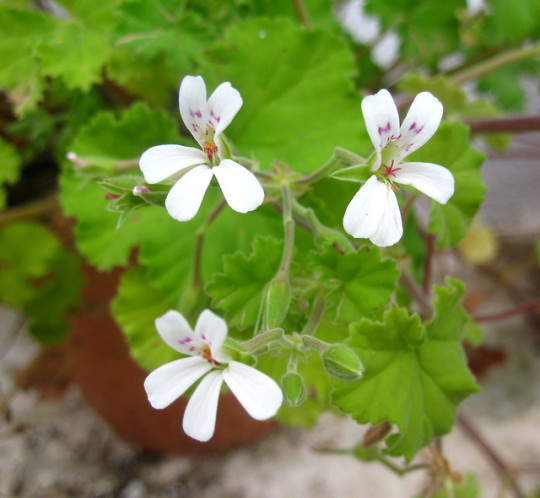
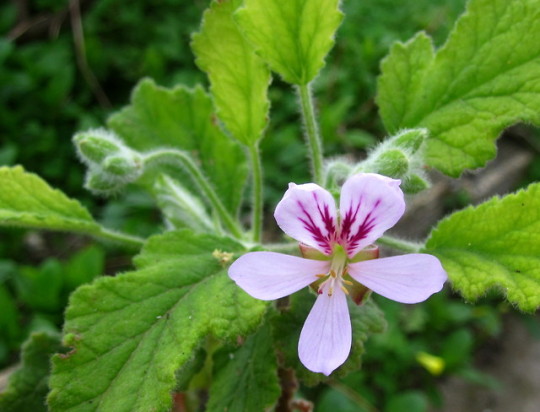

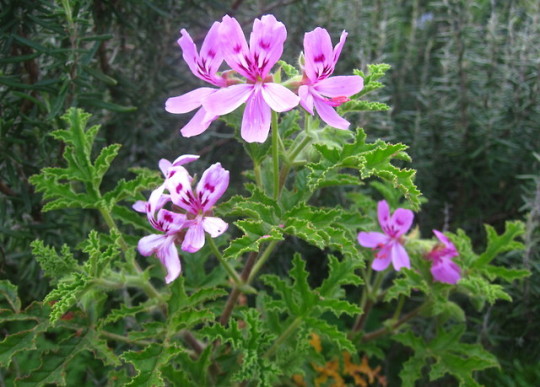
new pictures of recently opened pelargonium species flowers
1 note
·
View note
Text
Pelargonium praemorsum
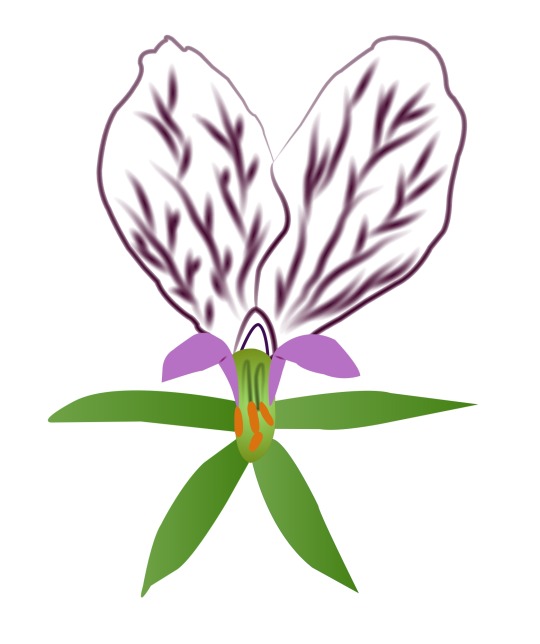
Pelargonium praemorsum has two subspecies one with white flowers and the other with pink to purple flowers, The flowers are very big and the upper petals resemble a butterfly. This plant is listed under the section Jenkinsonia which has similar shaped flowers to pelargonium endlicherianum, It was given the name prae-morsum meaning bitten off in Latin because of the shape of the leaves which appear sawn off at the ends. It is native to Namaqualand where it grows in rocky areas up to 30 cm s in height with zig zaggy stems.
0 notes
Text
Erodium pelargoniflorum

Erodium pelargoniuniflorum also known as sweetheart or heron's bill has attractive pale pink flowers that are similar to a pelargonium because of the darker markings on the upper petals which many pelargoniums possess, it was given the name pelargoniflorum because of the pelargonium like flowers.
This plant is native to Turkey and can grows up to 30 cms in height with petiolate leaves. There are about 182 species of erodium which are included in the Geraniaceae family.
0 notes
Text
Pelargonium incarnatum
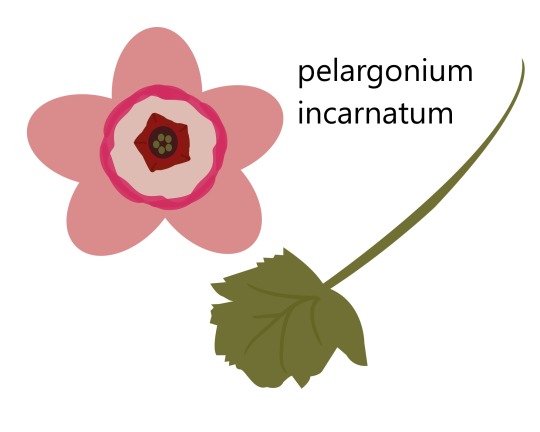
P. incarnatum is an unusual and attractive plant that has more of the appearance of a Geranium or Erodum because of its symmetric petals but it is in fact classified as a pelargonium, It is a bit of a mystery as it is the only Erodum type to be found South of the Equator and it is believed to be a hybrid between Erodum incarnatum and Pelargonium patulium.
The flowers are light pink with darker red in the centre and zoned circles of white and dark pink, it is a spreading plant which grows to 20 cm in height. The leaves are 3 lobed and irregular toothed, this plant is native to mountainous areas of the Western Cape usually among rocky sand stones.
0 notes
Photo

The amazing thing about Pelargoniums is not only the aromatic leaf fragrances & the elegant flowers but also the wide variety of leaf shapes, Many pelargonium species especially the more scented varieties have leaves that resemble other plants and can look similar to the leaves of an oak, grape vine, fern,birch, currant leaves, gooseberry, maple & ivy.
Some leaf types are more rounded in shape such as the P. odoratissmum (apple scented) and the P. grossularioides (gooseberry leaved fruit scented), where as the P. cucullatum (birch leaved), P. citronellum (lemon scented) & the P. vitifolium have more irregular rounded to triangular leaves.
P. radens (rose/lemon scented), P. quericifolium (balsam oak leaf) and P. denticulatum (balsam scented) have finely divided leaves,
P. elongatum, P. mollicomum (pineapple scented) , P. peltatum & P. Zonale all have zoned leaves
P. betulium – birch leaf
P. fruticosum- fern leaf
P. grossularioides- gooseberry
P. hirtum- feathery leaves
P. hispidum- maple
P. otaviense – paw like
P. panduriforme – fiddle shaped
P. peltatum – ivy leaf
P. quercifolium – oak
P. ribifolium- currant leaf
P. vitifolium – vine leaf
4 notes
·
View notes
Text
During the 1800s pelargoniums were greatly admired in Europe especially that of England, France, Germany and the Netherlands which were grown in greenhouses or conservatories. From the mid 1800s to the 1900s the practice of producing cultivars was in development, during this period well over 8000 pelargonium cultivars were being created for the more larger and colourful flowers. The earliest example of this was mentioned in Sweet's geraniaceae works, when he describes the hybridization of Pelargonium cucullatum, an upright shrub that grows to 2 metres in height with purple to light purple flowers native to the Cape Province. These new hybrids were known as “Regals” from the 1870s, They have large showy flowers in a range of sizes & colours from white to dark red, in pastel or brightly coloured shades, some with wavy edges. Later Liberty Hyde Bailey (1858-1954) an American horticulturist & botanist at the American society of horticultural science acknowledged the hybridization of the Zonal & Regal pelargoniums, Pelargonium Zonale is an upright hairy scrambling shrub that grows to about 1 metre in height with zoned leaves & light pink, white or red flowers. Zonal pelargonium cultivars are still popular today because of their colourful single, double or semi double flowers in a variety of colours and also because of their wide range of attractive leaf markings also in a range of colours. Pelargonium zonal was known as P x hortorum (referring those grown in the garden) and Pelargonium cucullatum (referring to those grown in the house). In the late 1800s a plant nursery by the name of Henri Dauthenay listed seven different cultivar pelargonium types, including Zonals, variegated-leaf, regals, ivy leaf, scented leaf and old pelargoniums. In modern times there is now wide range of pelargonium cultivars, although these are beautiful plants the old charm of the original species pelargonium cultivars have now been lost.
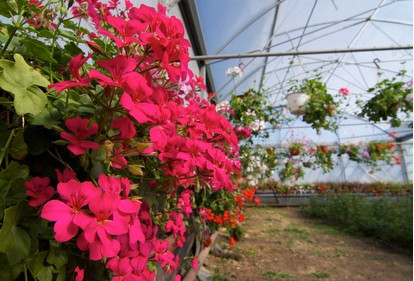
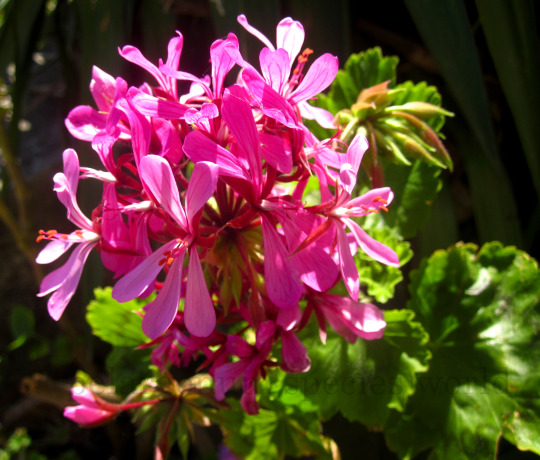
#pelargonium#geranium#purple flowers#gardening#hobby#pelargonium cucullatum#pelargonium zonale#zonal#regals#nature#flowers#leaves#hybrid#cultivar#pelargonium species
0 notes
Text
The seed catalogue of today provides you with an array of colourful images & detailed information of a wide variety of flowers and plants. The first catalogue ever to be created was in 1498 by the Venetian scholar & tutor Aldine Pius Mariutius who had a keen interest in Classical literature and wanted to create a pamphlet so other people could read and enjoy the Latin & Greek classics which included works by Aristotle, 9 comedies of Aristophanes and many more. Aldine helped to setup the Aldine press printing office & the funds were provided to him from the Giovanni Pico's family to create the printing press for his publications. It wasn't until 1667 when the actual first seed catalogue was produced by William Lucas a gardener who wanted to create a pamphlet containing seed prices for his customers, it consisted of drawings with plant names which was delivered by post. Towards the 1800s and with the introduction of tropical and exotic plants entering Europe including pelargoniums, tradesman and gardeners wanted to create an easier way of presenting their plants to customers, drawings and paintings were added to the catalogue to display their colour and beauty. During the Victorian Era the Seed Catalogue was becoming evermore popular, especially the Carters catalogue of 1887 which was published at the time of Queen Victoria's Succession to the throne. Other catalogue's includes Westmacott & Co 1830-40s, Dingee & Conard co 1887, Townssends, D.M Harrison & Sons, Coles 1890s which had painted images of flowers and plants.

0 notes
Text
Pelargonium glutinosum is now in flower which has rain drops from the winter rain, The leaves are balsam Scented & has light to dark pink flowers.

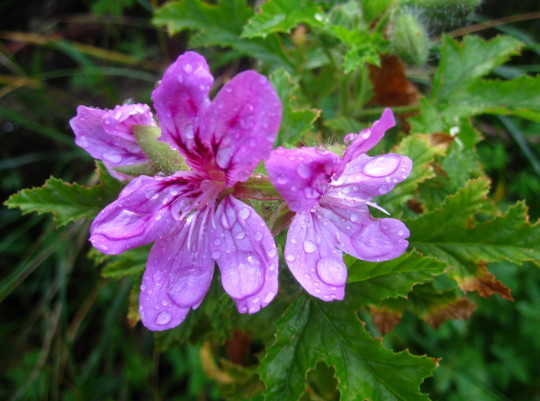
2 notes
·
View notes